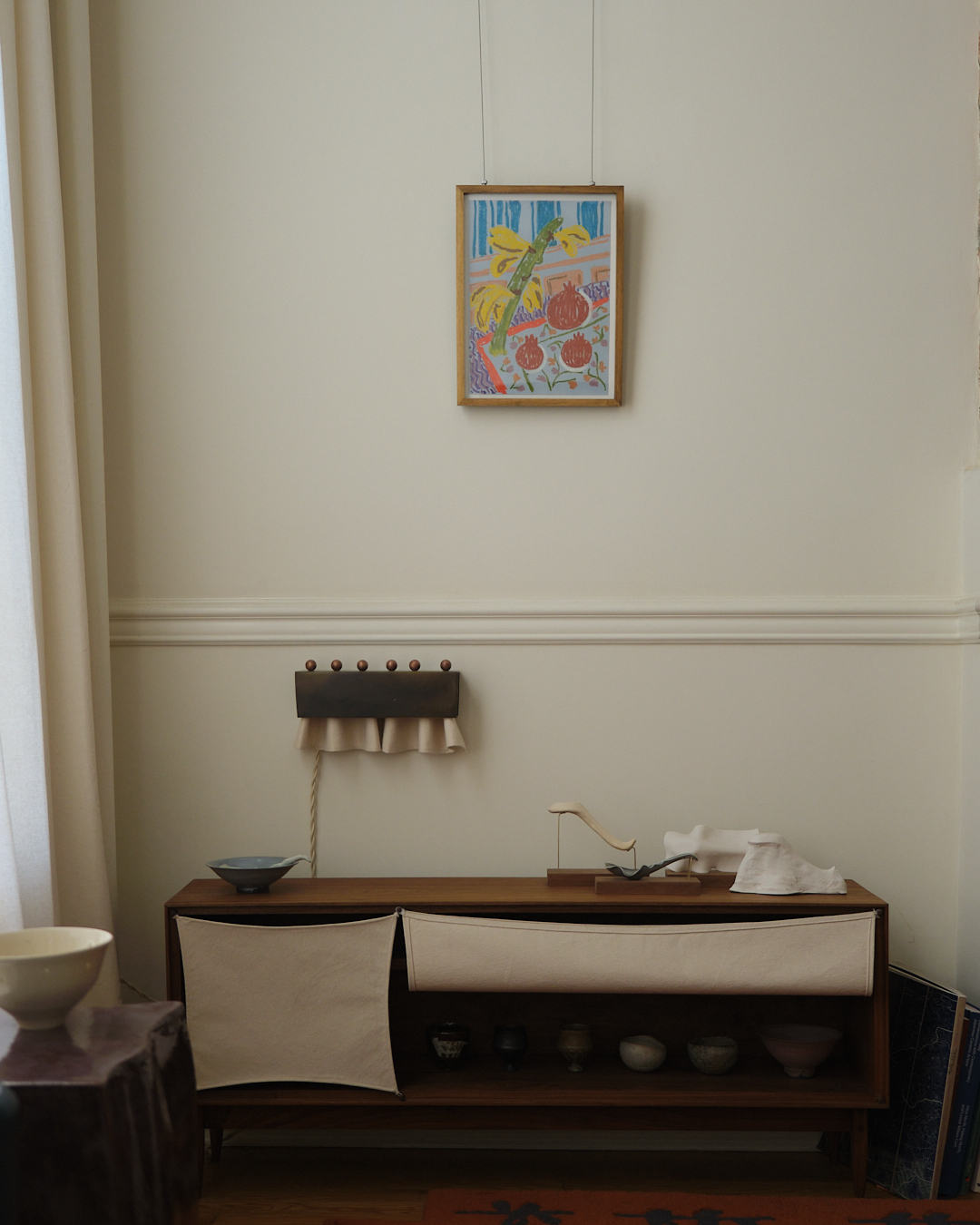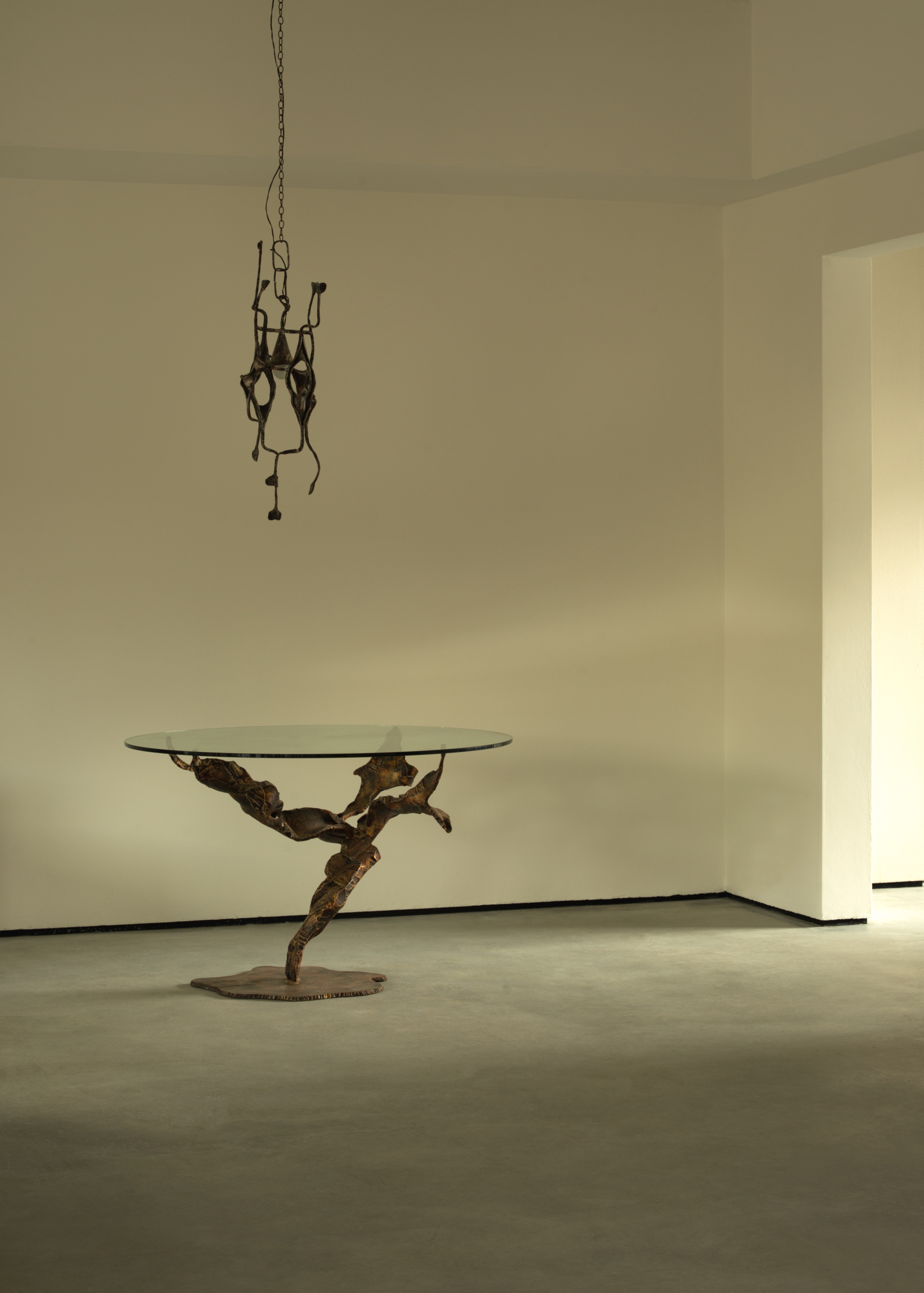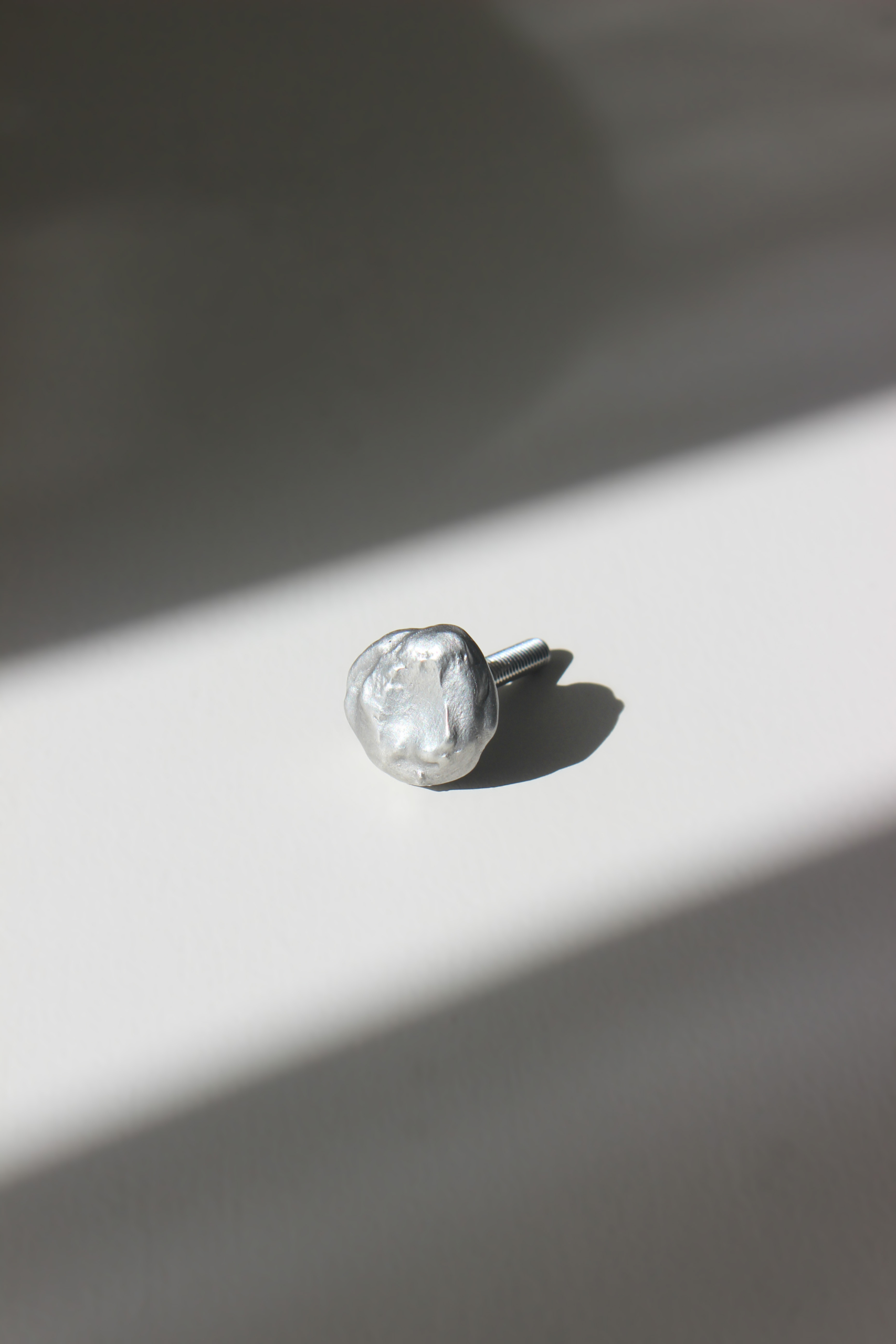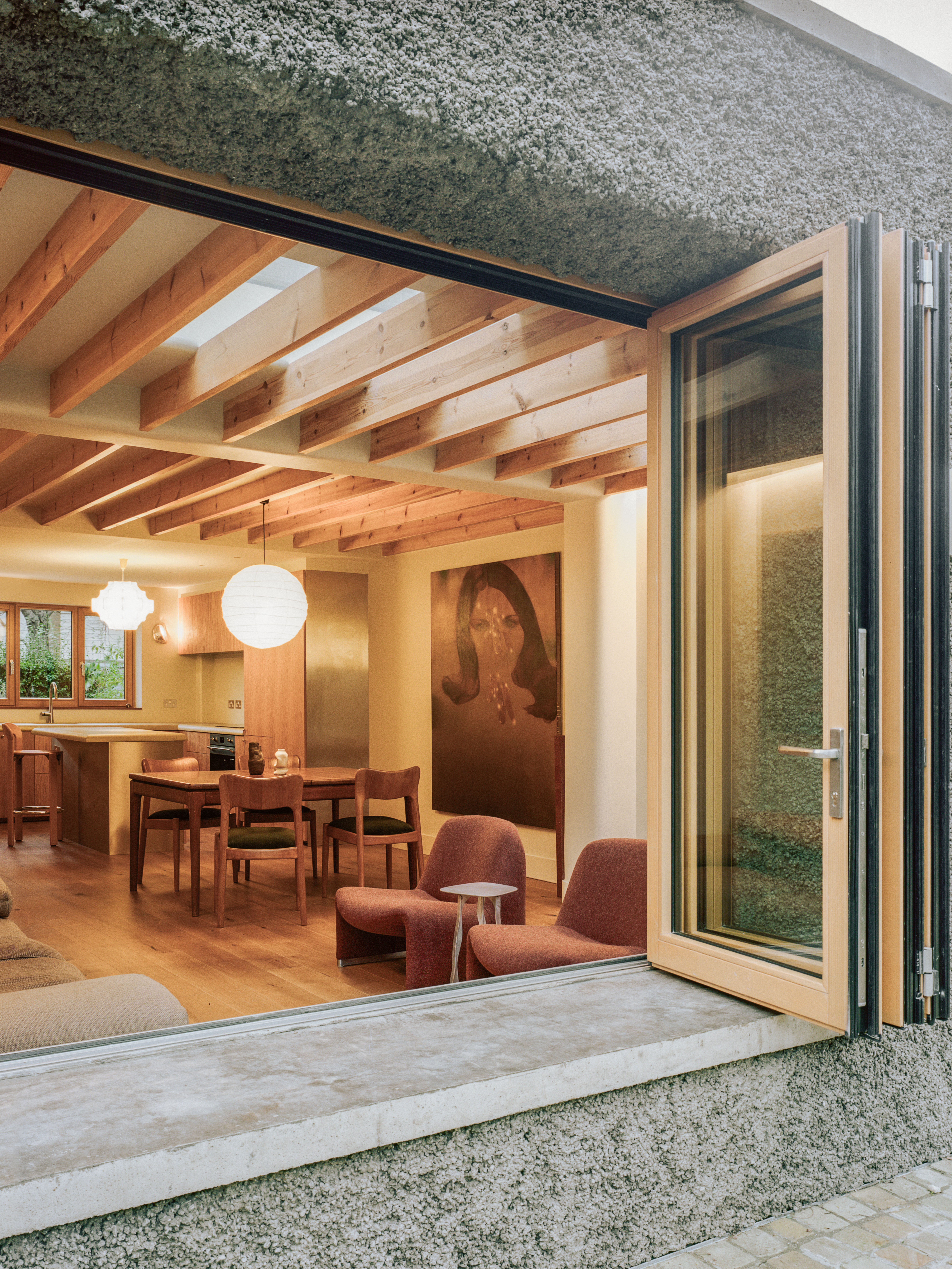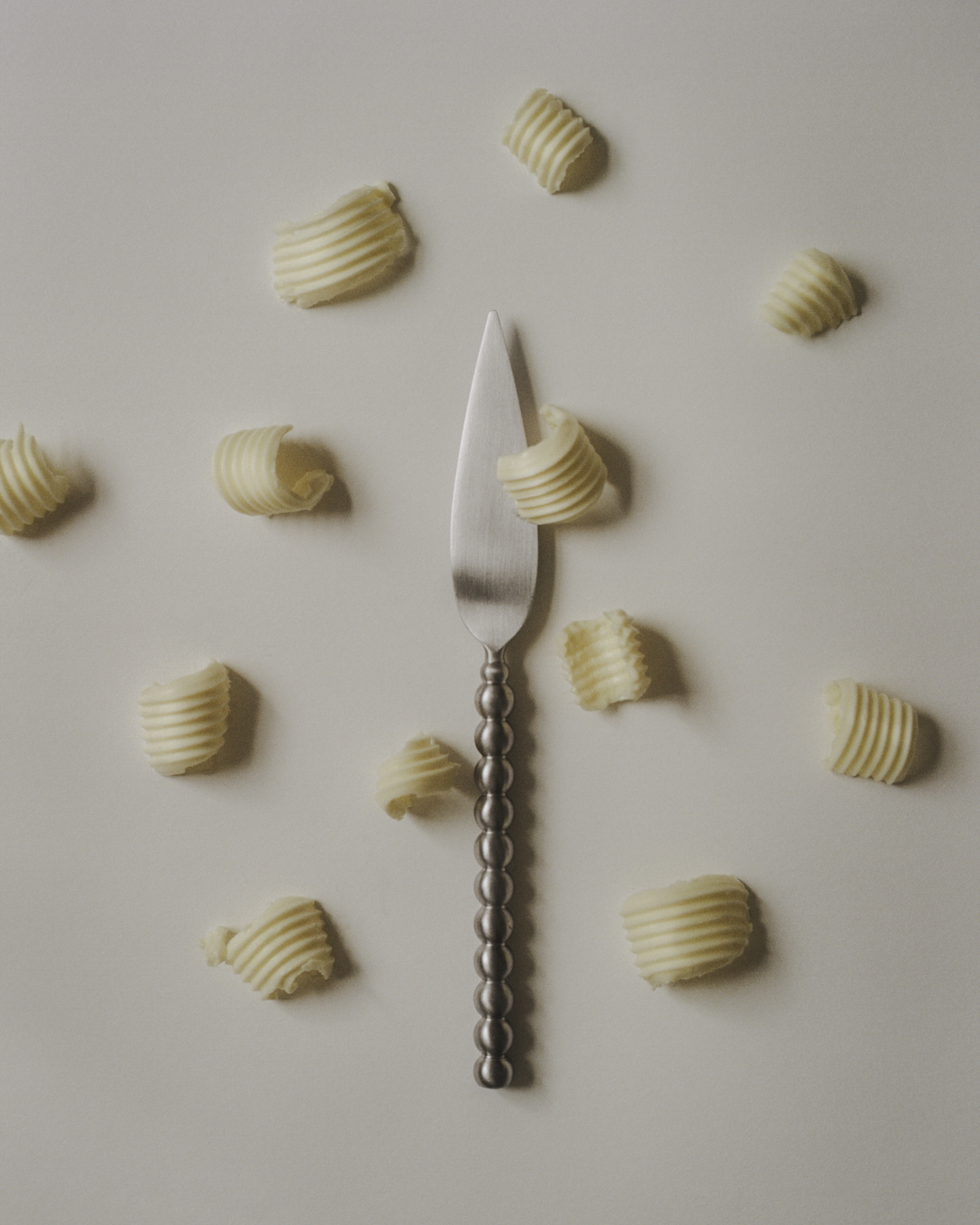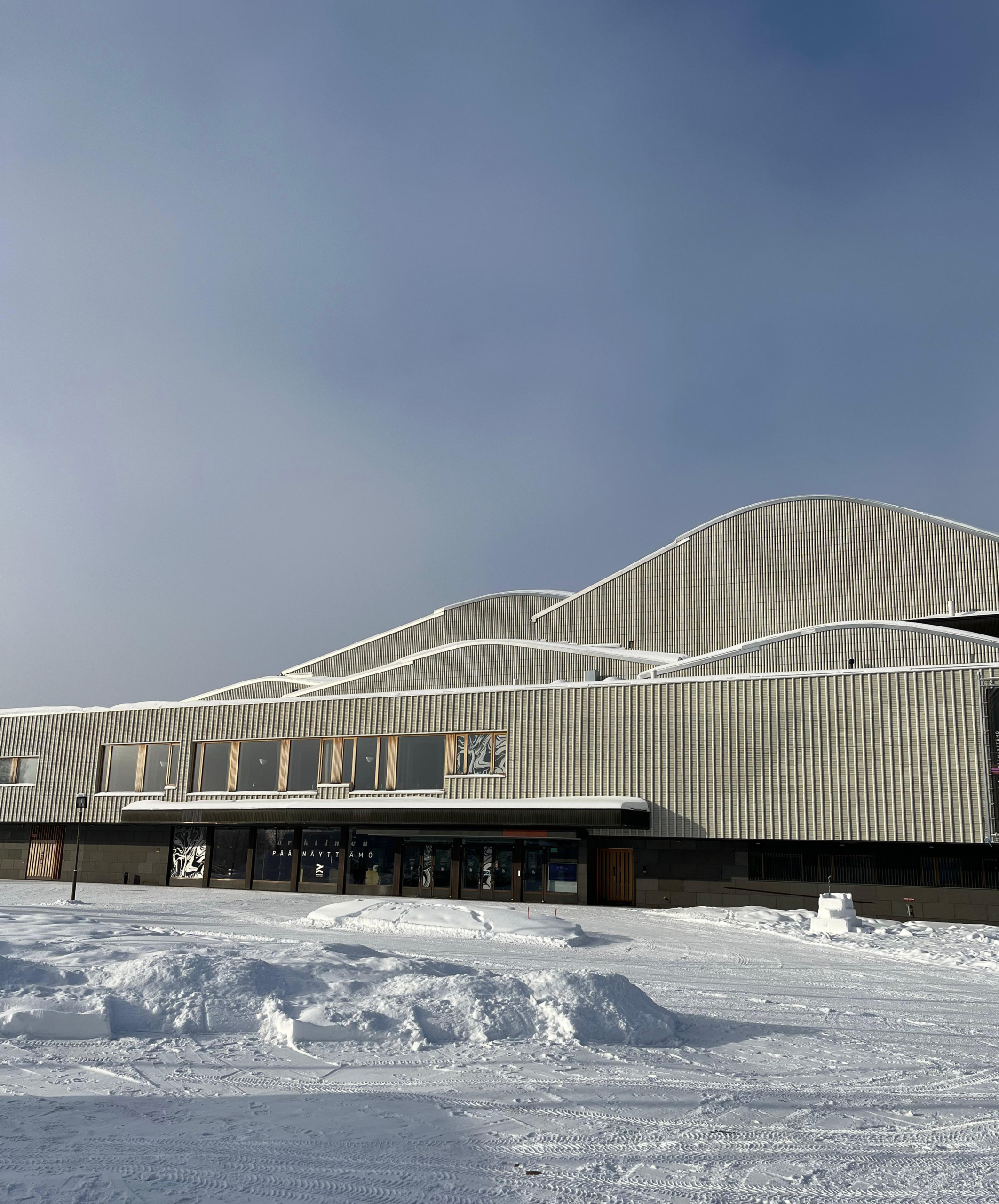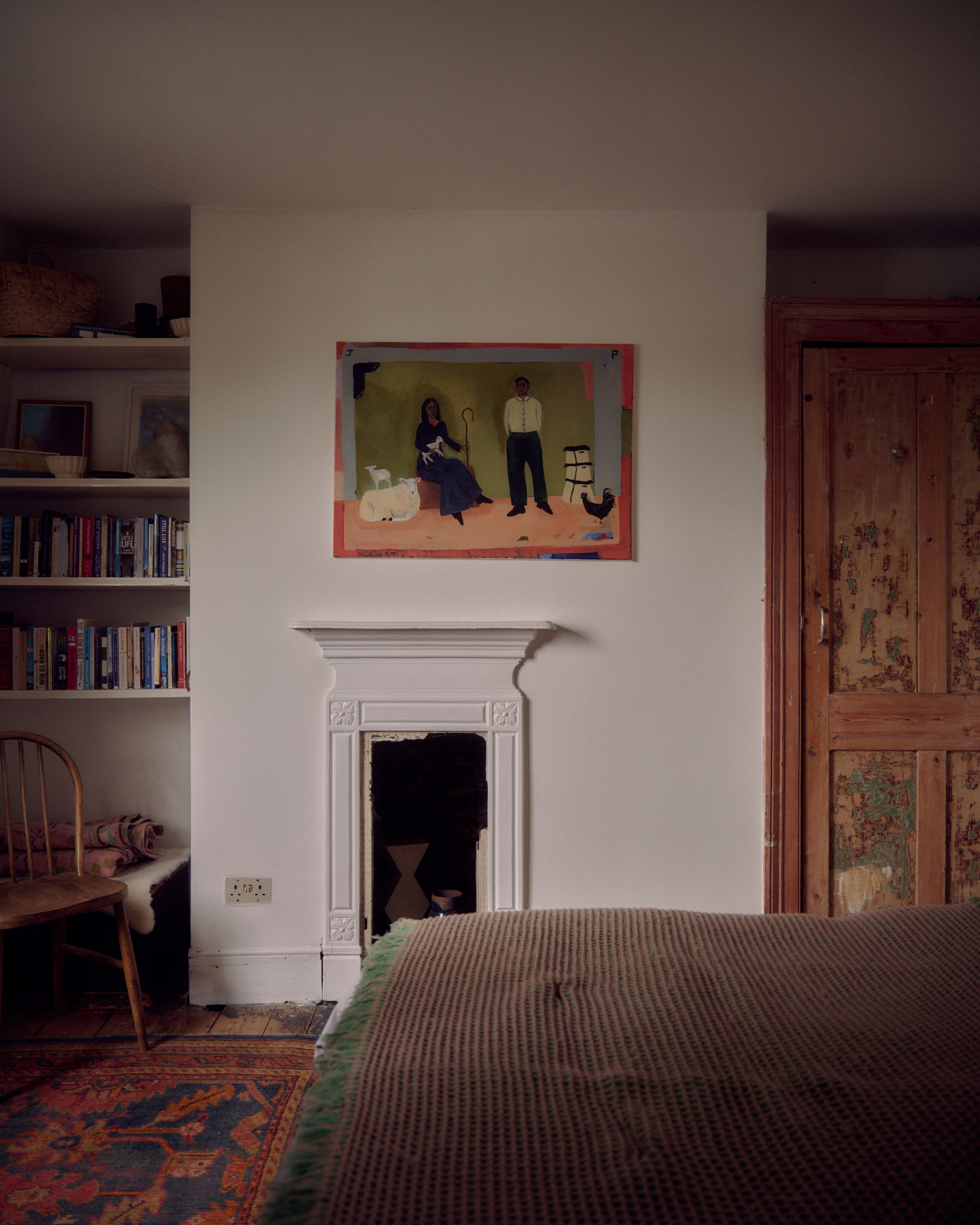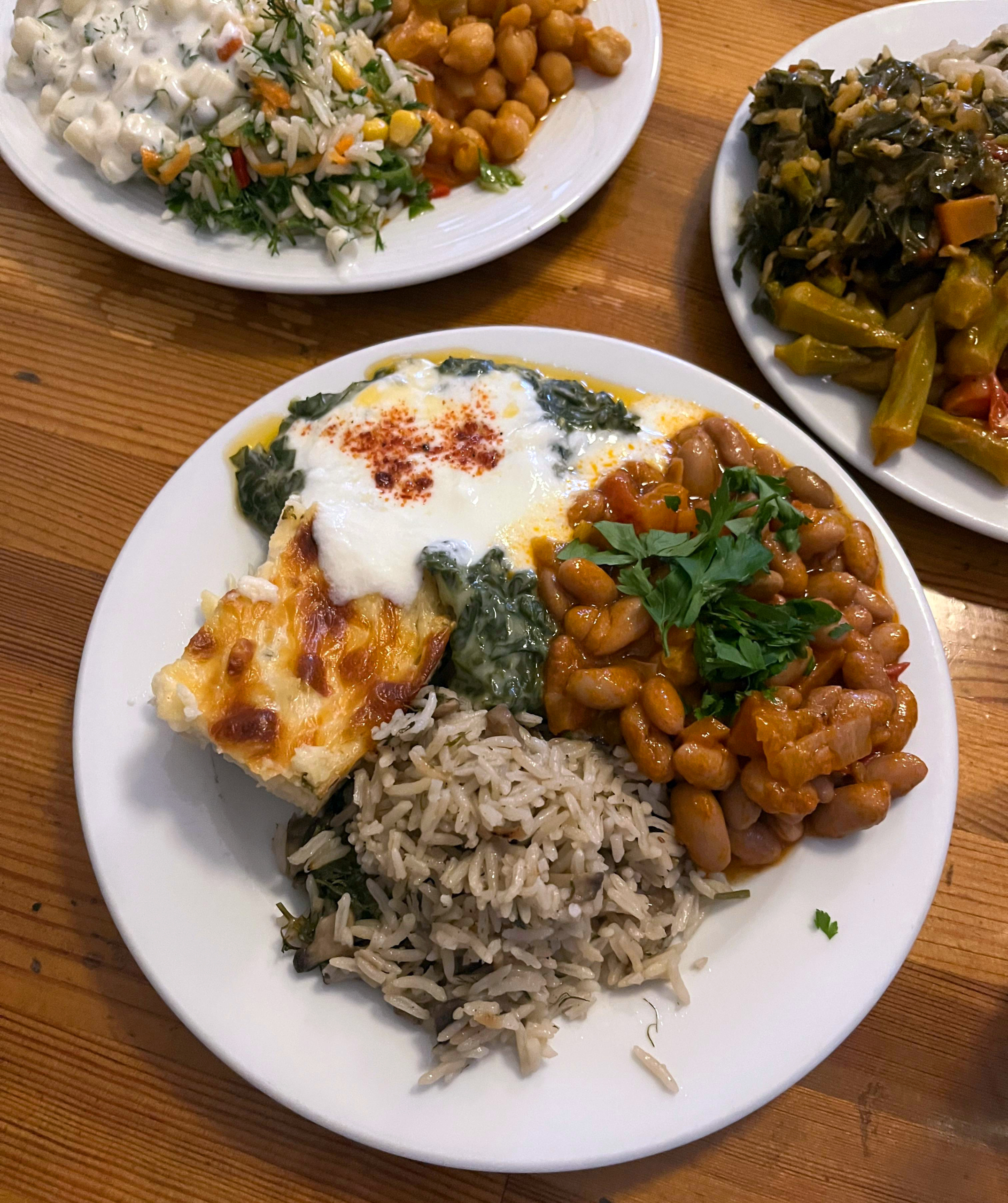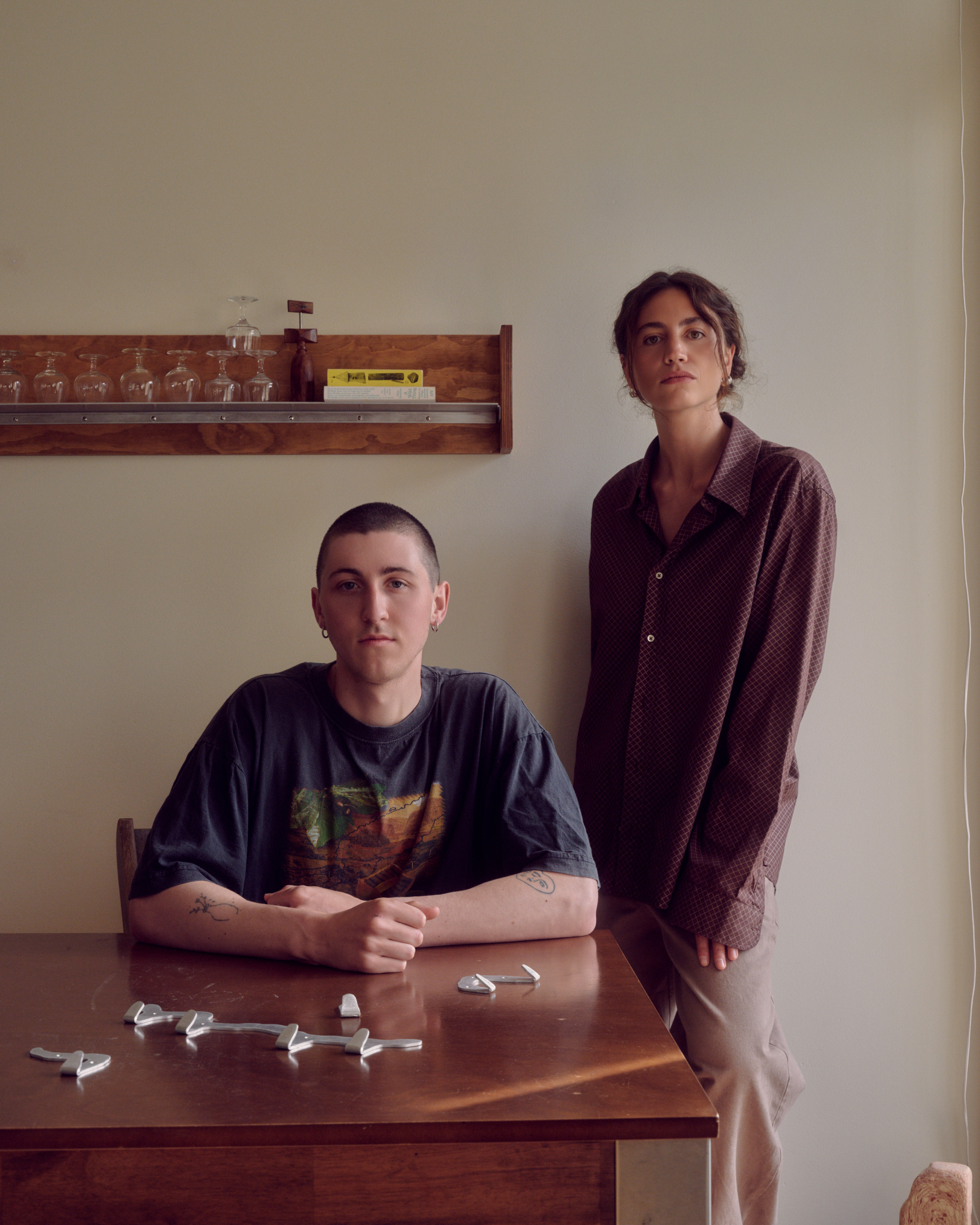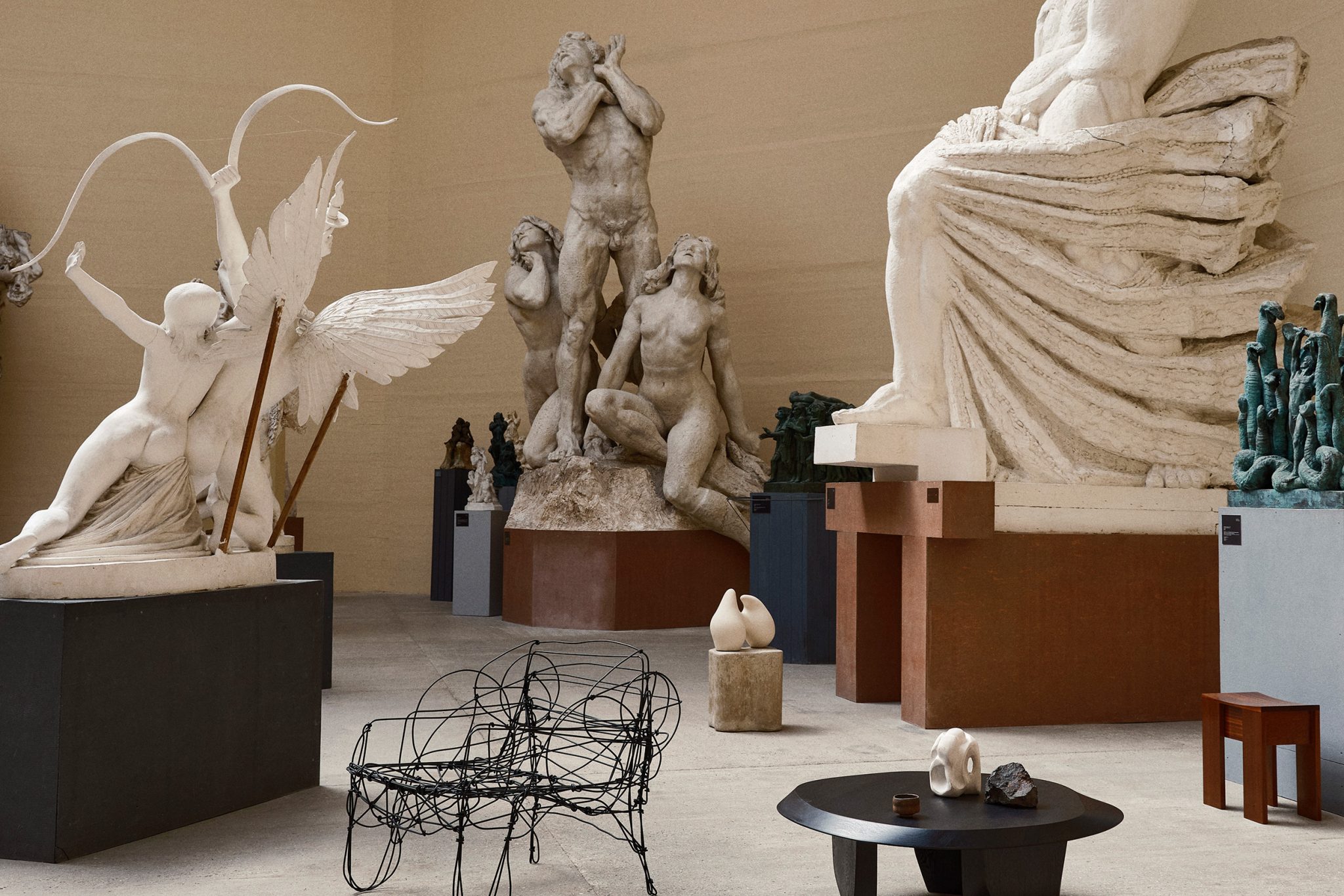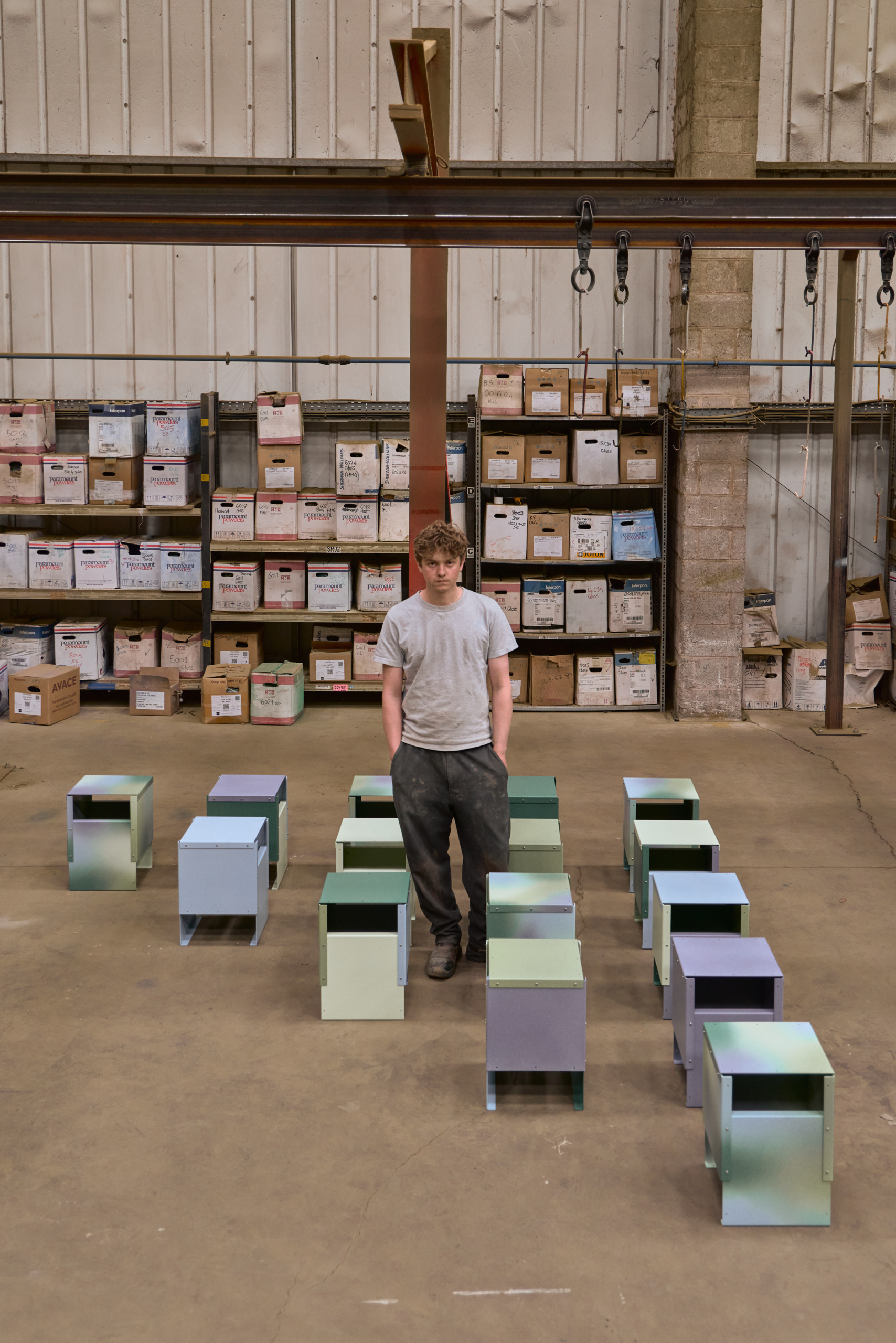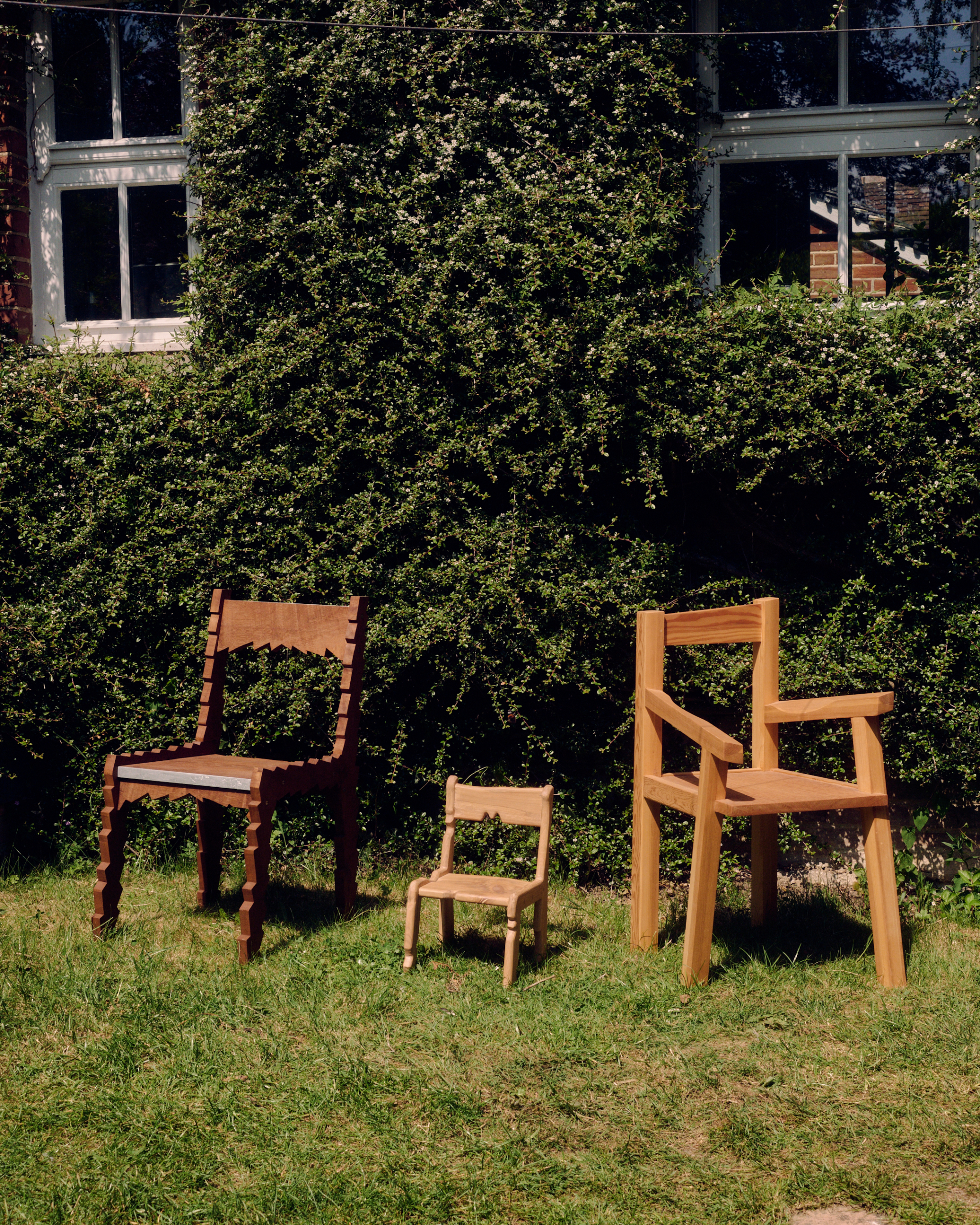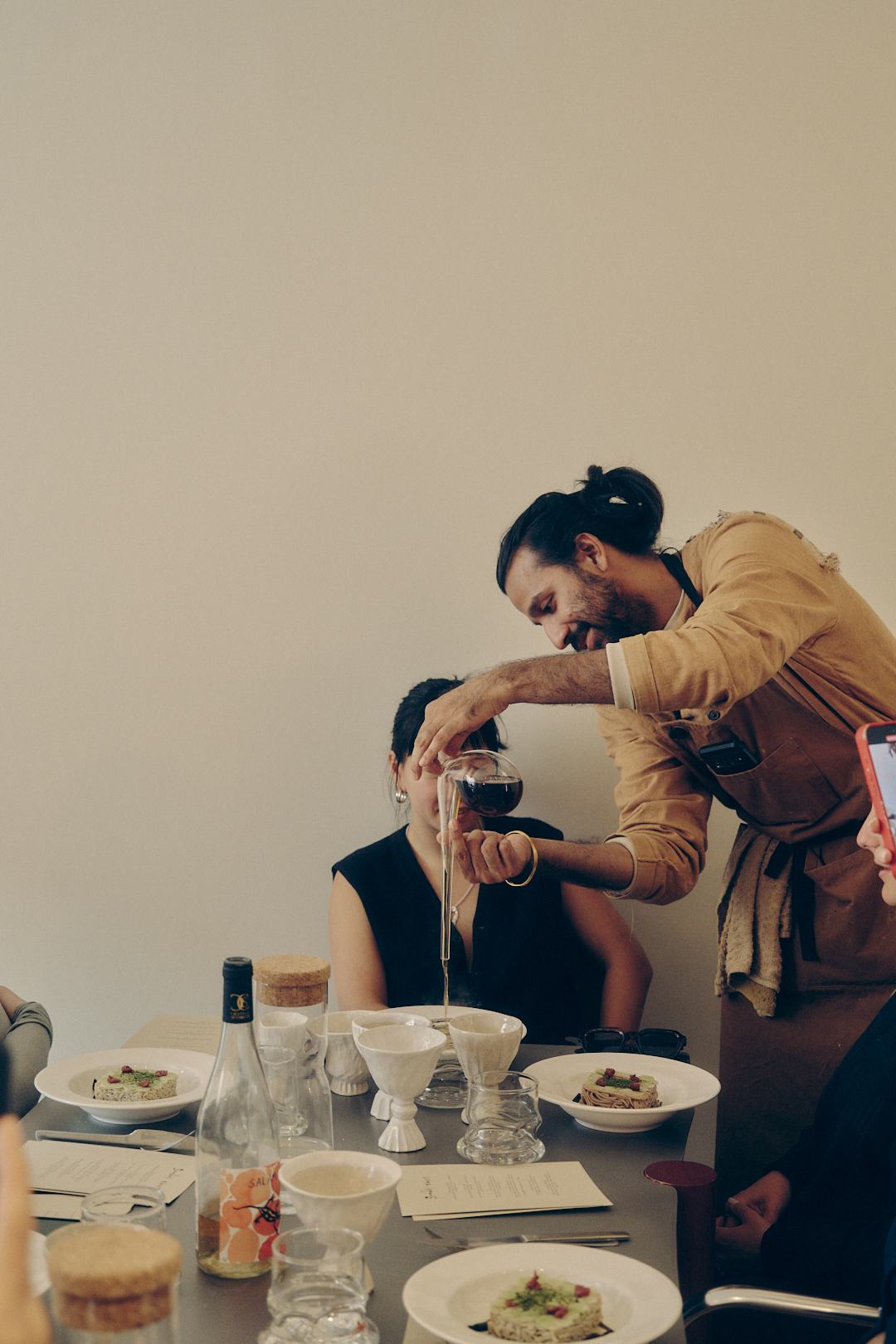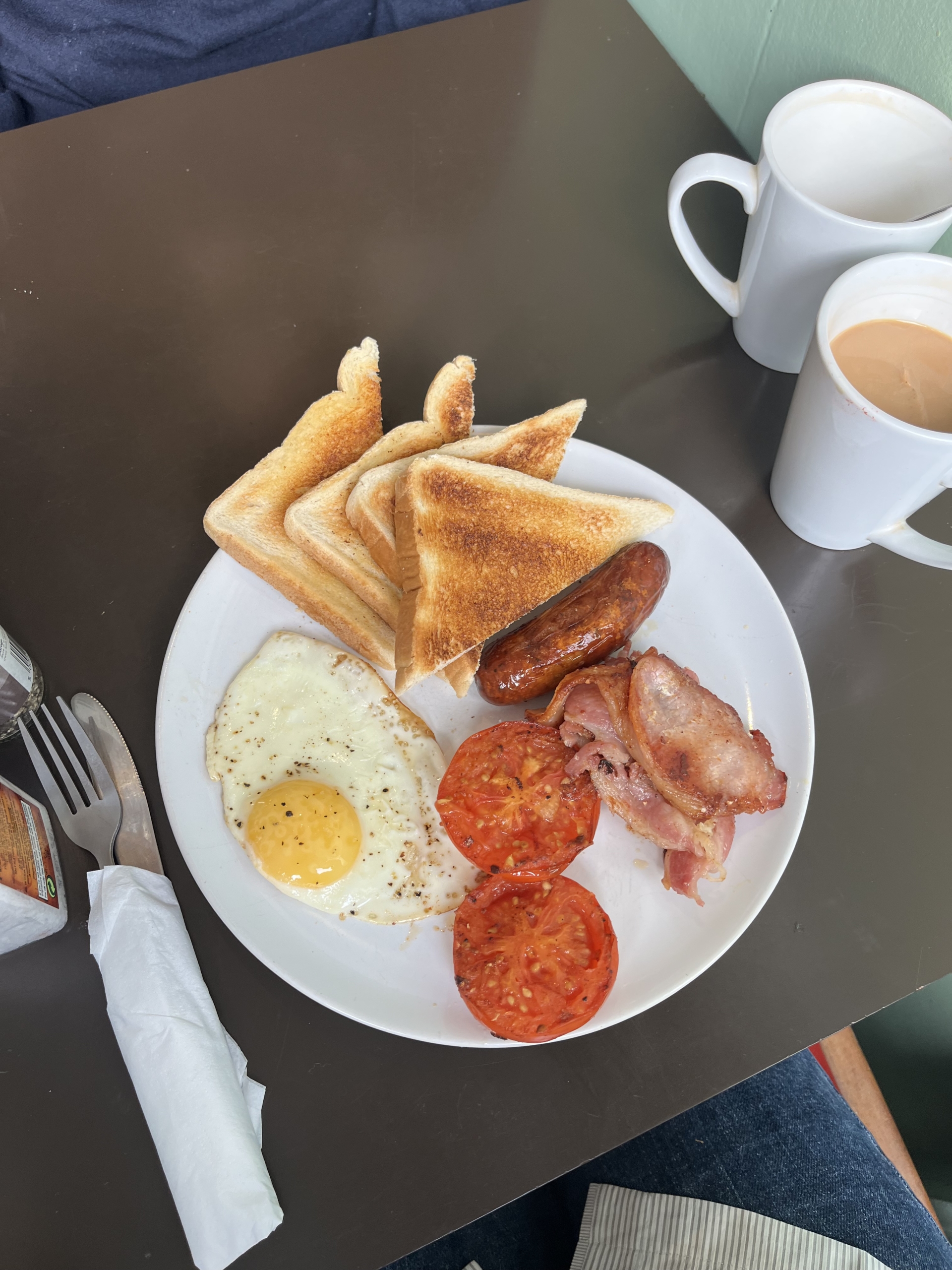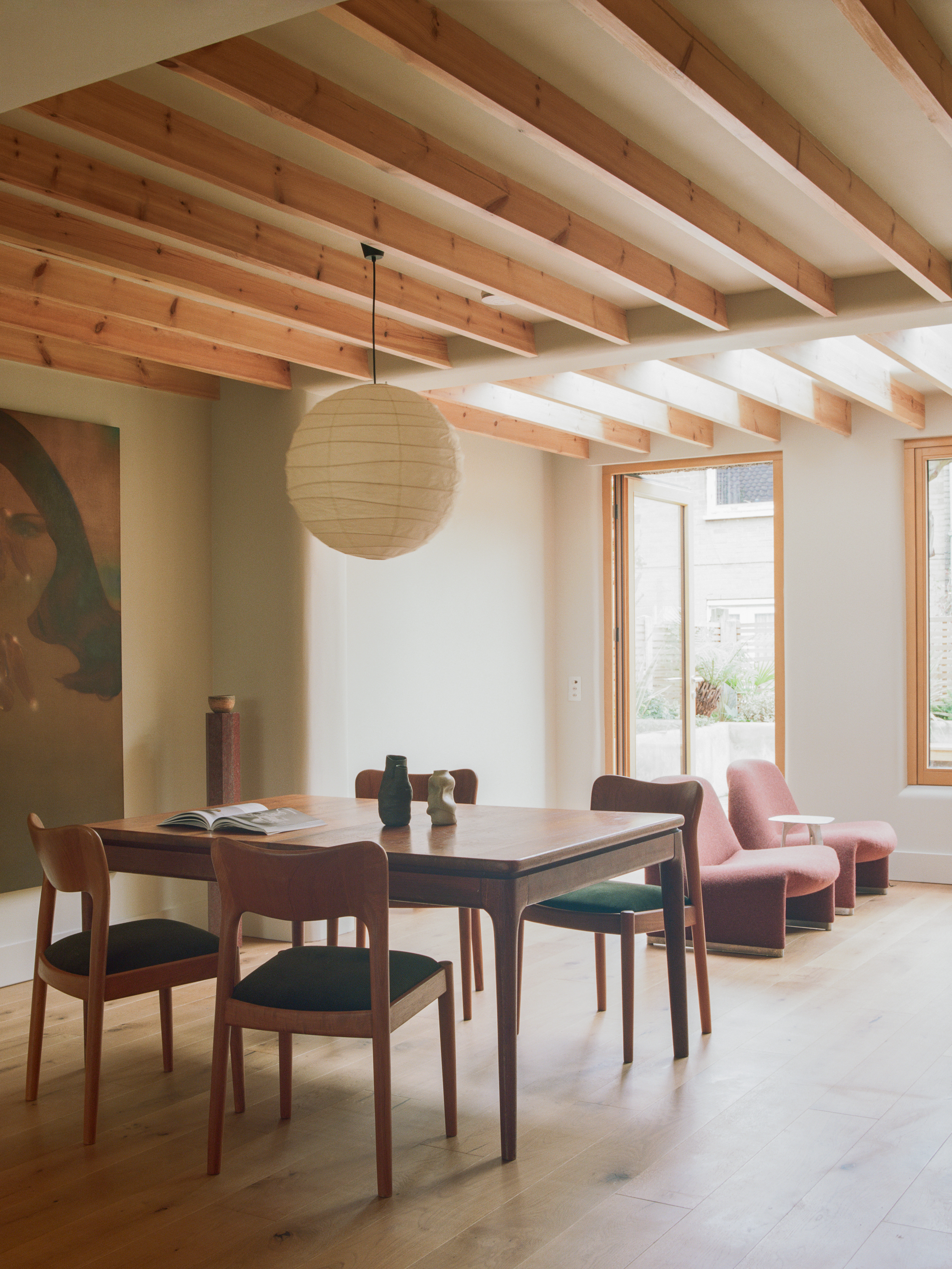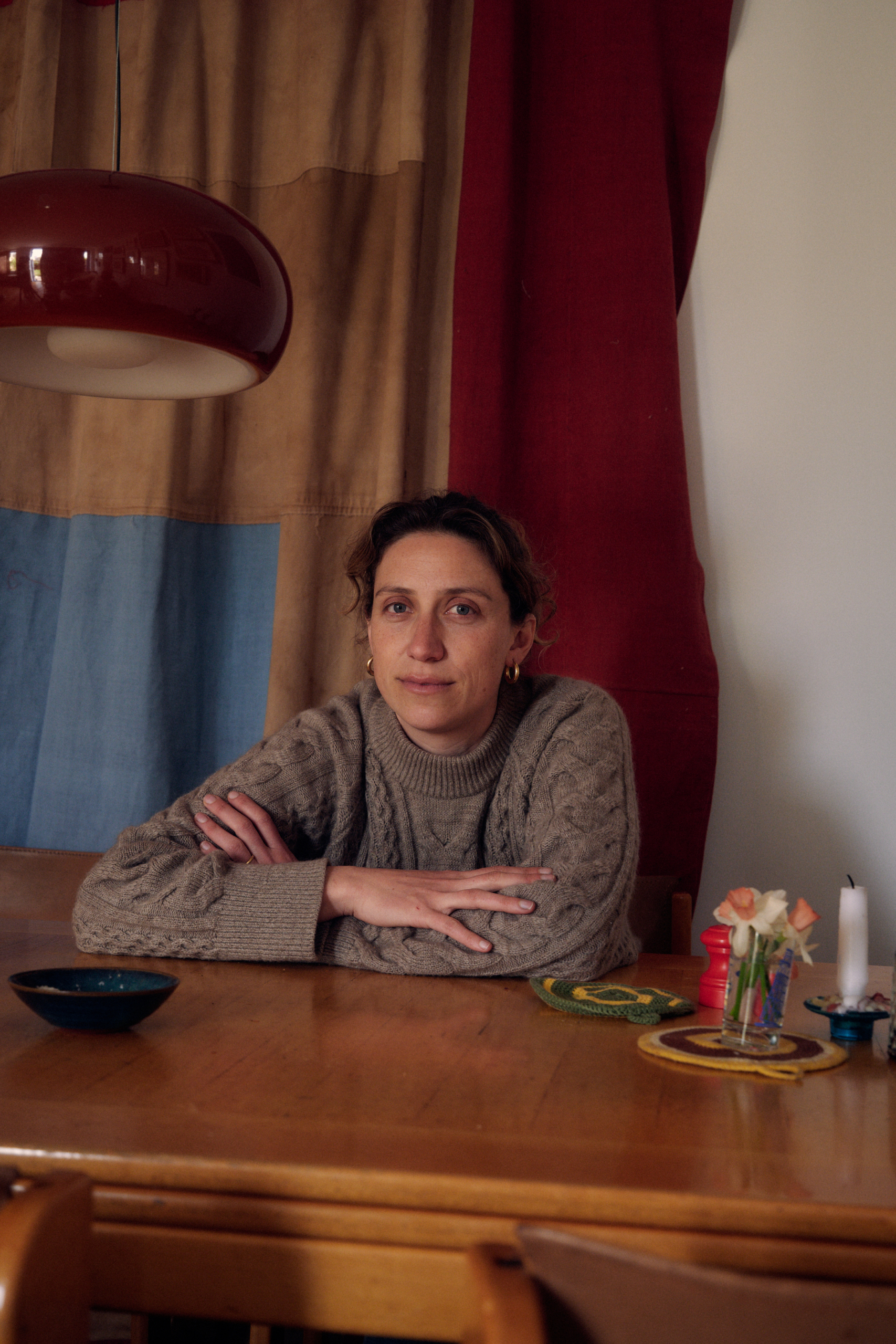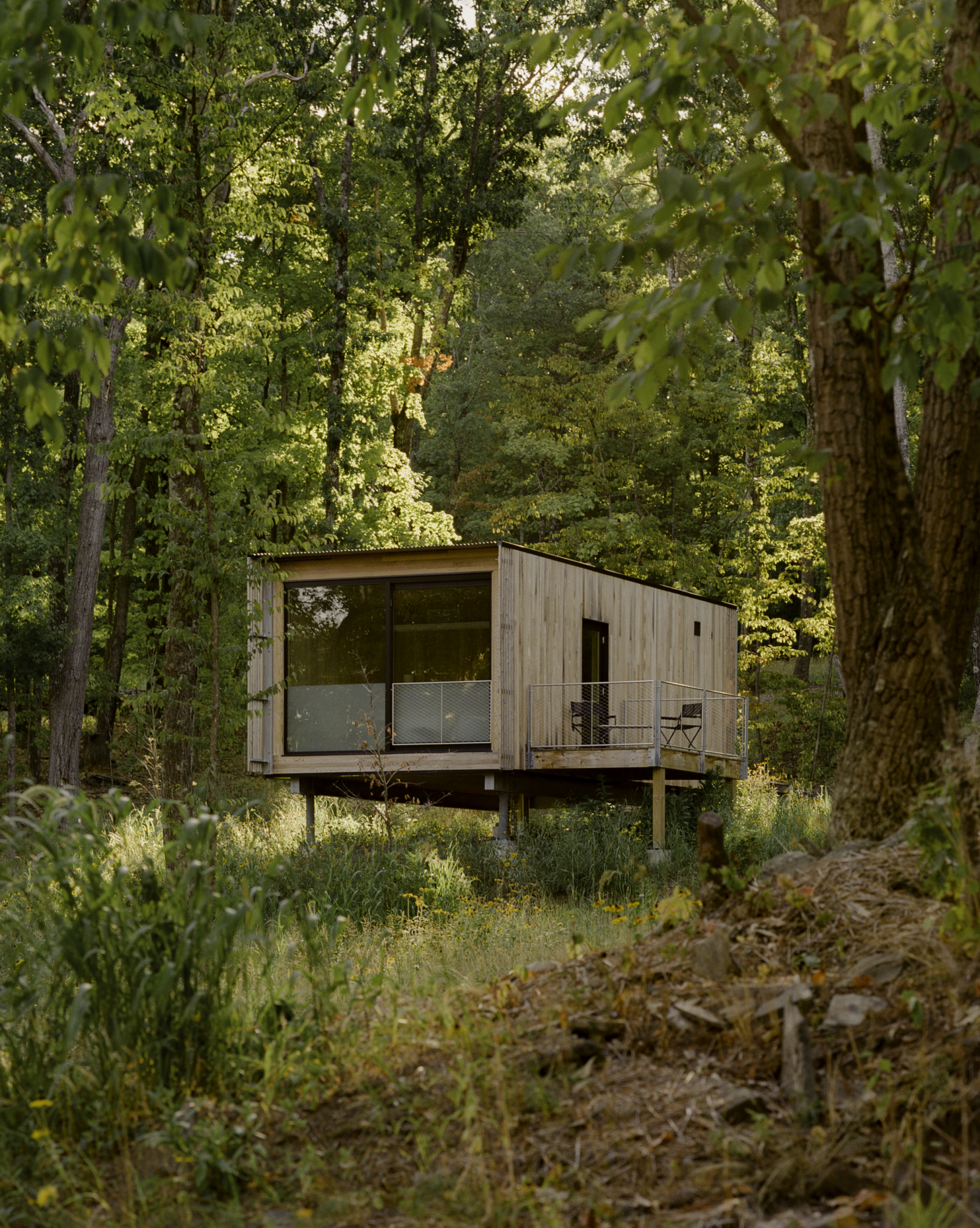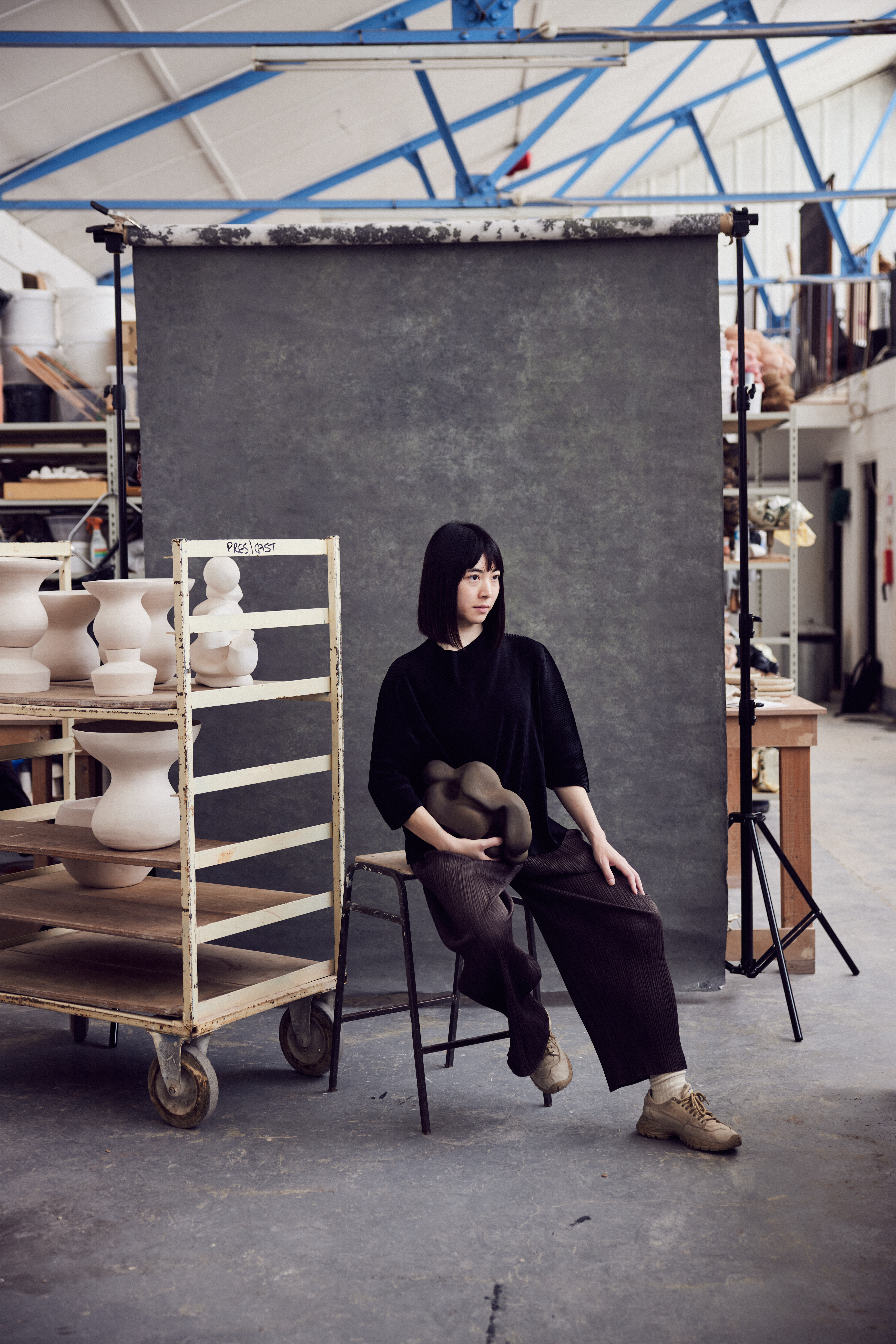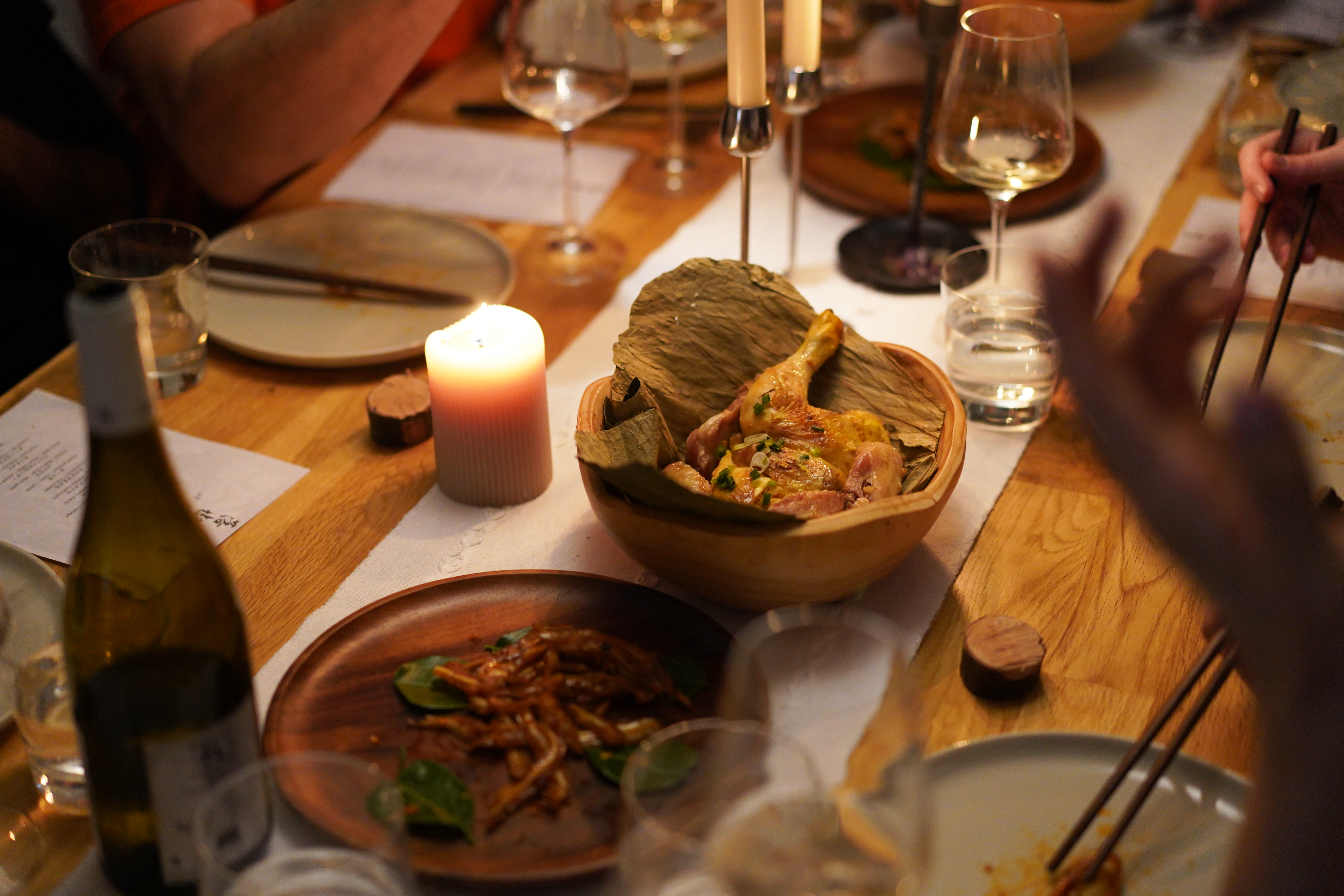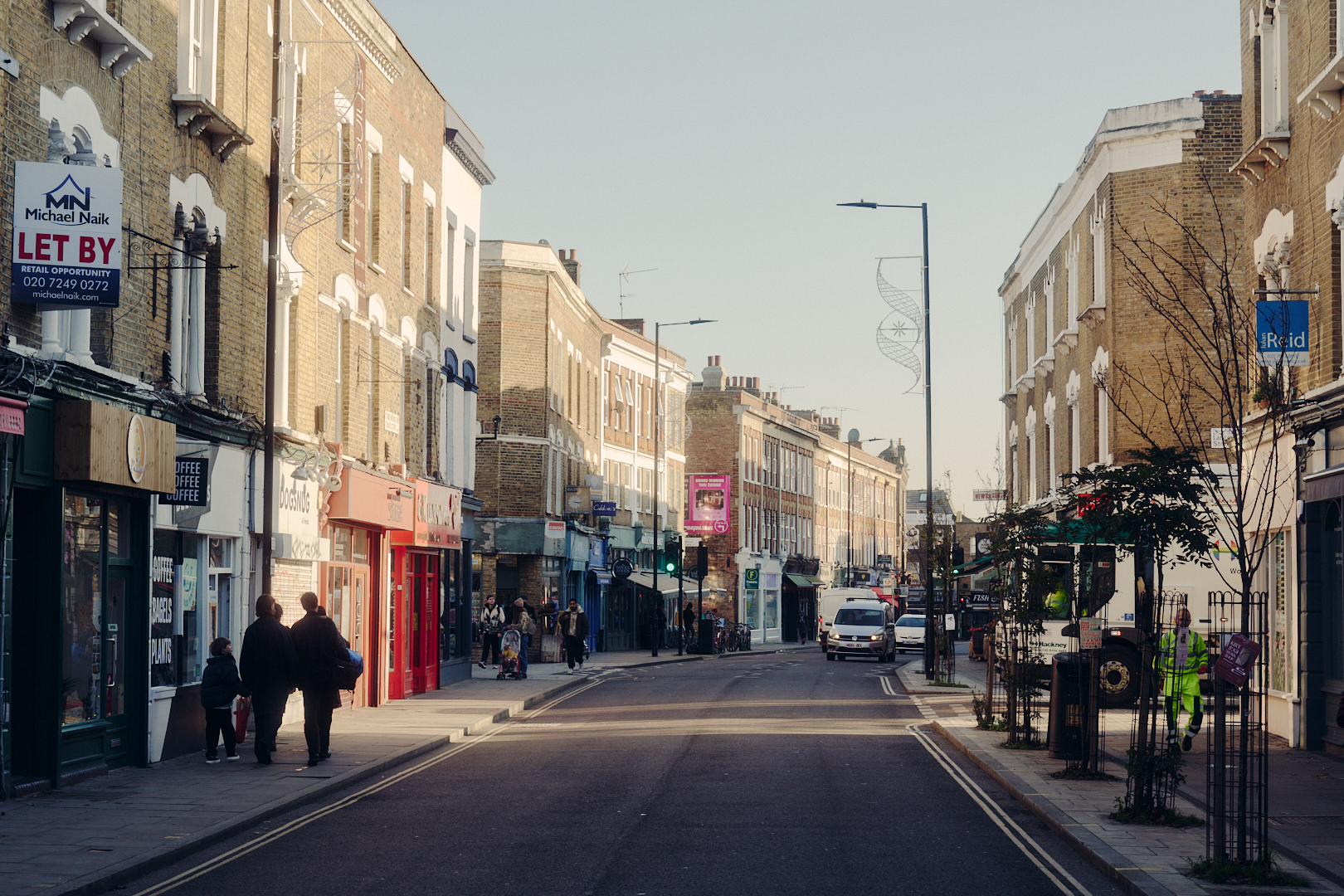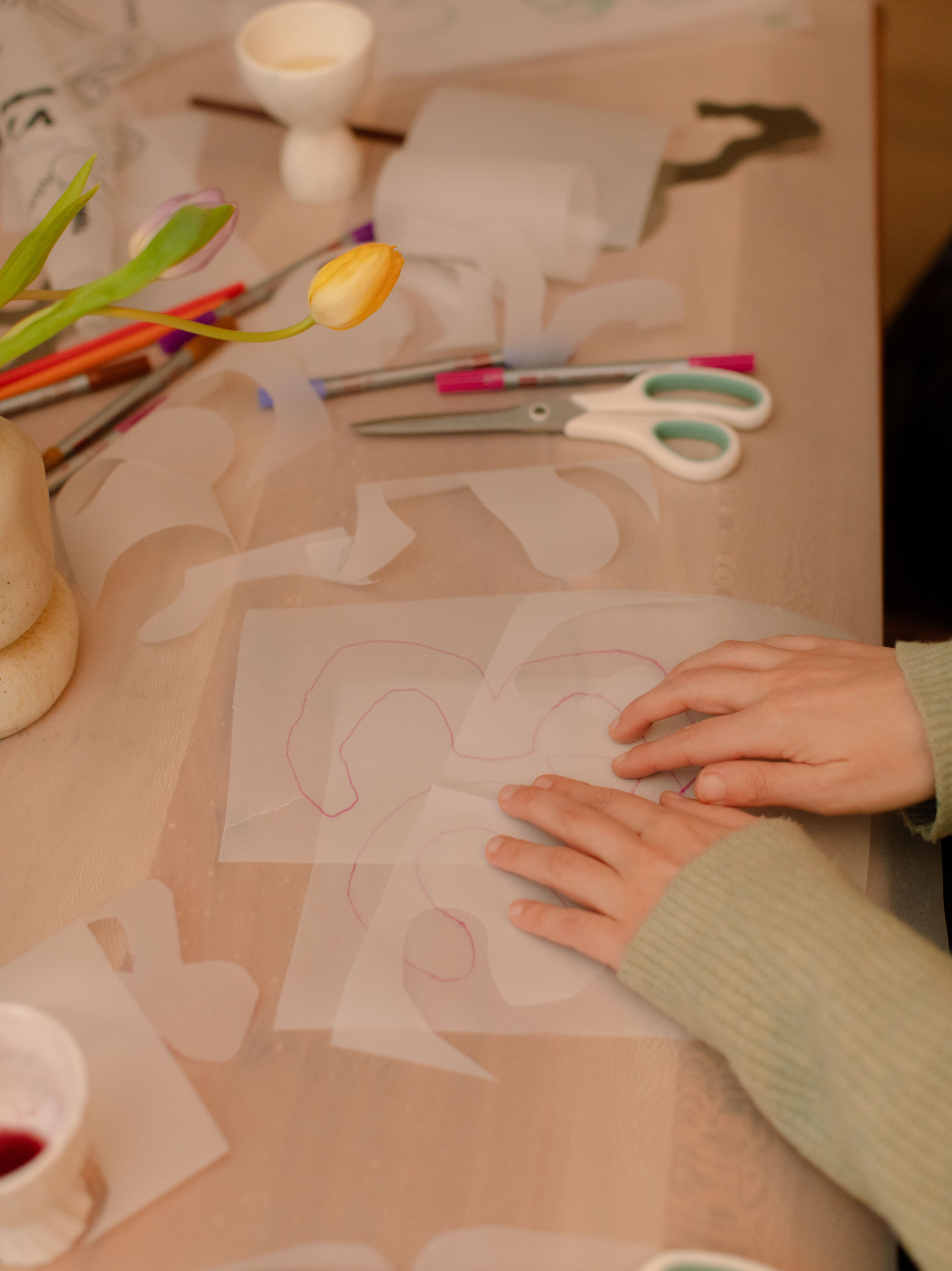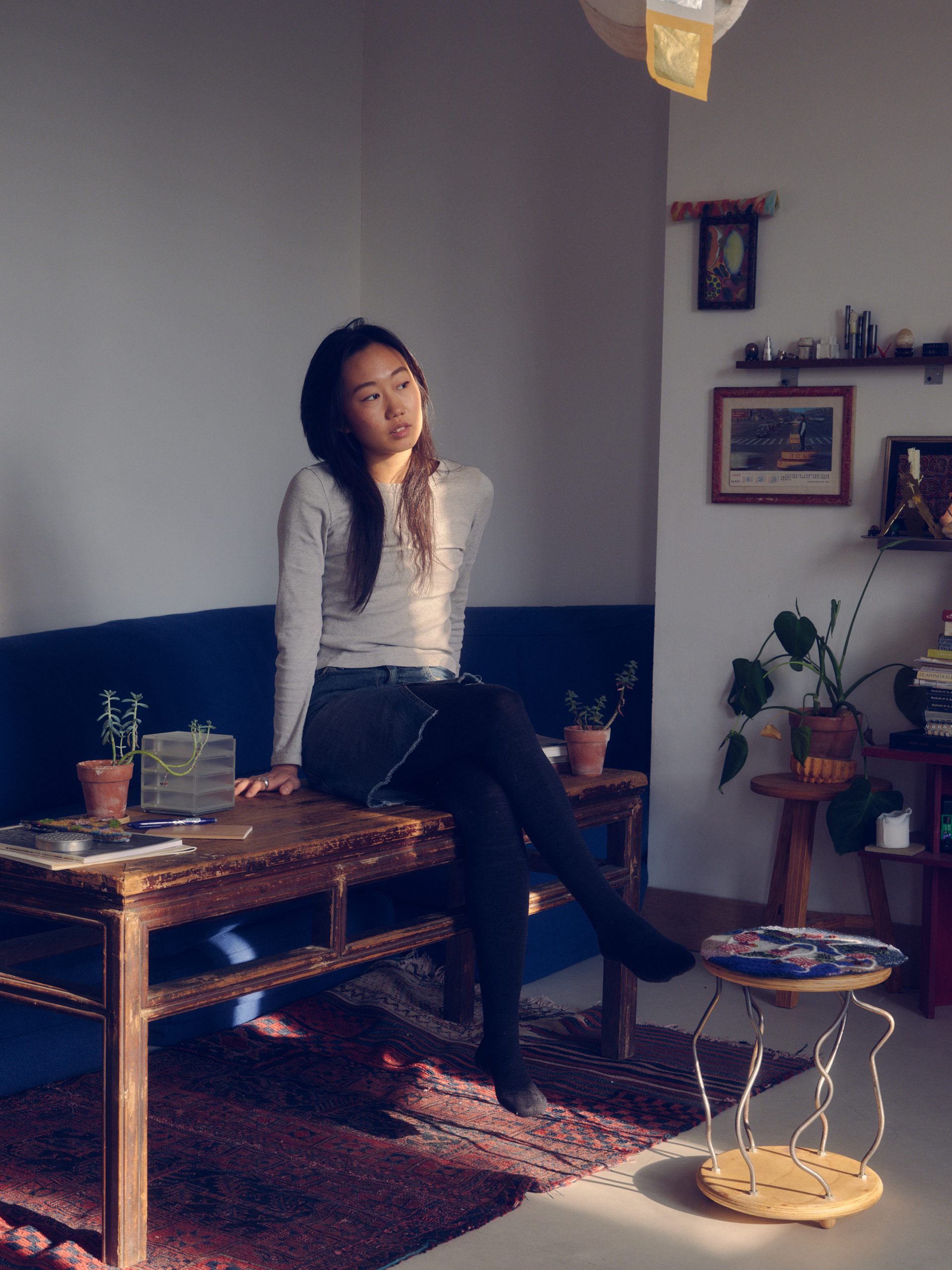A Design Duo’s Reunion with a Family Farmhouse in Alsace
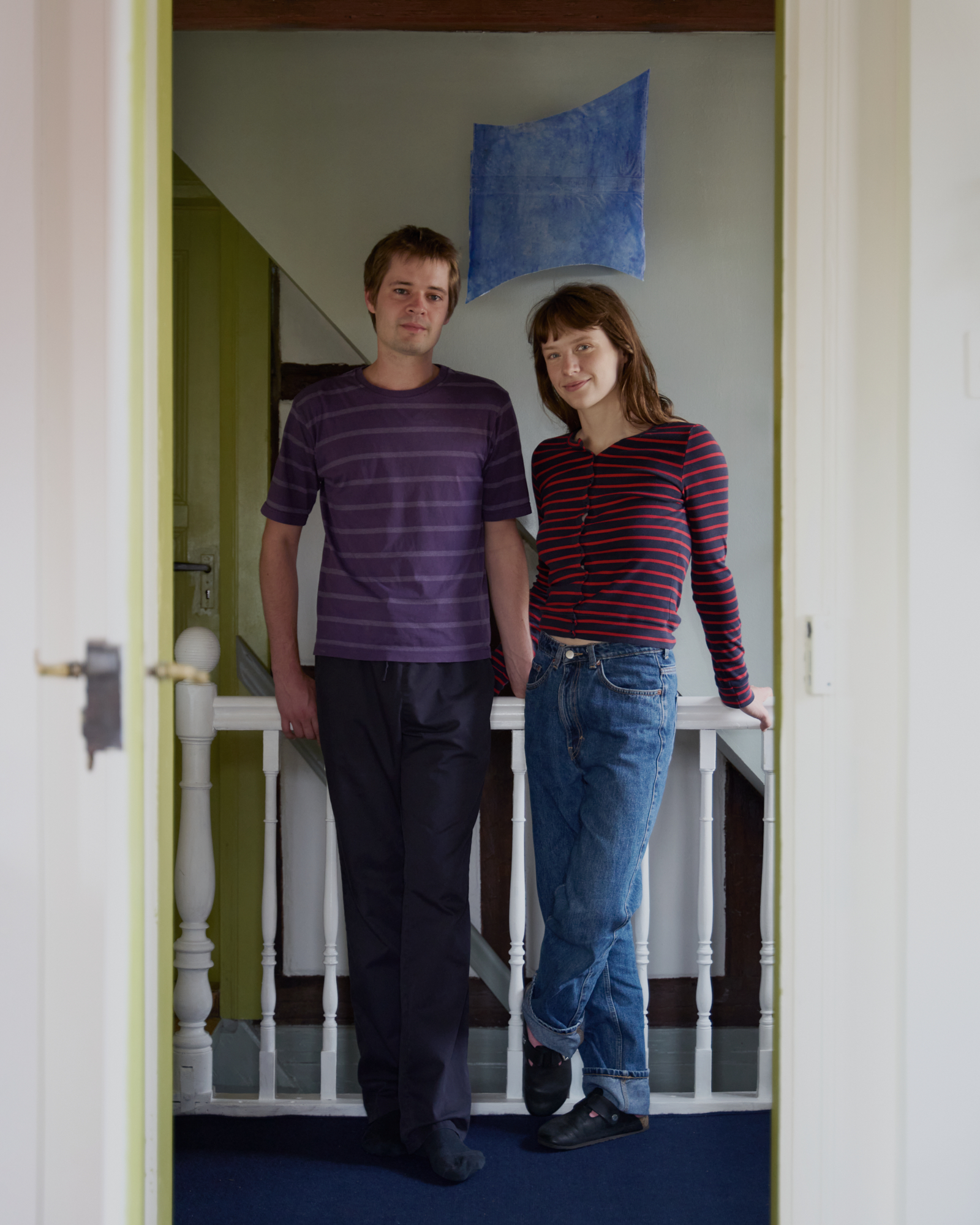
Tucked into the corner of a quiet Alsatian village, about 15 minutes west of Strasbourg, is the first full interiors project by MOSS – the design studio of Madeleine Duflot and Lewis Baxter. It’s a renovated holiday rental, or gîte, set within the grounds of Madeleine’s family’s old farm. It’s a place where she grew up, and where generations before her lived, and worked. Now, thanks to nine months of hands-on transformation, it’s a home for new stories to be backdropped by the material play that defines the couple’s practice.
The gîte is one of two former farm lodgings that were once used to house agricultural workers in the early 19th century. Madeleine’s great-grandparents lived there until 1928, before building the house where her grandmother and later her mother were born. From the 1970s her grandmother began hosting paying guests – as part of the Gîtes de France network – in these same spaces. Over time, the buildings fell out of use, becoming too draughty and outdated to rent. But where others might have seen disrepair, Madeleine and Lewis saw a blank canvas. “We could really do anything we wanted,” says Madeleine. “It was a complete world – and a chance to make something cohesive, from start to finish.”
The pair met in London in 2021, introduced by a mutual friend at a barbecue. At the time, Madeleine was working in spatial and product design, juggling creative workshops and furniture collaborations; Lewis had a background in art and was beginning to explore design. What began as a romantic relationship quickly evolved into a creative one. “We just started talking about things we wanted to make,” says Madeleine. “It all happened quite naturally.” Soon, MOSS was formed – a studio intent on playful, material-led experimentation. Early pieces included resin-based flower holders, tulip-shaped mirrors, terracotta lamps. The work was fast, intuitive, often speculative. “We’d have a little idea and just try to make it real,” says Lewis.


This spirit shaped the gîte renovation, too – even if the first phase was less glamorous. The walls were lined with pine panelling, the floors thick with glue and linoleum, and the insulation practically non-existent. “We were a bit naïve,” Lewis admits. “We thought we’d just sand and paint – but 70% of the work was structural. Stripping back, patching up, re-insulating everything from scratch.” Still, this painstaking process revealed unexpected treasures. Good-quality wood was salvaged and re-used to make benches, chairs and shelving. Existing materials were reimagined and given new life in a thoughtful, attentive process that suits a place already steeped in layers.
What followed was a renovation shaped by memory, craft and improvisation. The couple moved into Madeleine’s parents’ house next door and worked long days in the space – sanding, assembling, sketching, testing. “It was very open,” says Madeleine. “We came up with things on the fly. We’d look at what we had left and think: what can we do with this?” Offcuts became structures; wainscoting became benches. They sourced objects from local flea markets – which, they point out, are nothing like a London car boot sale. “They’re incredible,” says Lewis. “We’d go every weekend. It became a real ritual.”


Throughout, there was a desire to stay connected to the region. Alsace has a distinct visual identity defined by timber framed buildings, traditional folk costumes and its emblem, the migratory white stork that spends its summer in the region. While Madeleine and Lewis didn’t want to recreate this literally, they allowed Alsatian influences to permeate in subtle ways. The tiles behind the kitchen are of a traditional kelsch pattern; the wide bench in the dining area, made from reclaimed pine, feels like it could have been there for decades – only the sharp, triangular cuts across its form reveal a more contemporary hand. “It was about keeping some of the feeling,” says Lewis. “But making it ours.”
Many of the pieces designed for the gîte now live on as standalone products – the fibreglass lamps, the aluminium shelf brackets, the timber chairs. And while each sits comfortably in the space, they’re not overly refined. “I think we both like things to feel slightly raw,” says Madeleine. “A little imperfect – but still intentional.” It’s a balance that defines MOSS’s practice more broadly: between craft and clarity, oddness and elegance. Madeleine pushes for bolder, more instinctive gestures; Lewis brings a technical rigour and grounding. “I’ll come with an idea,” says Madeleine, “and Lewis is the one who’s like – OK, but how do we make it? He knows how to figure things out.”
If the gîte project was their first opportunity to design a full interior, it was also a chance to work on their own terms – free from a client brief or commercial pressure. “We knew we wouldn’t live there full-time,” says Madeleine. “But we wanted it to be somewhere we’d enjoy staying. Somewhere our friends would enjoy staying. It had to feel generous.” That meant a layout that encourages lingering – the big dining bench, the soft-toned bedroom, the open-plan kitchen and lounge. A space to cook, read, host, or simply watch the light move across the floor.


Community, too, shaped the process. An elderly neighbour – a retired electrician – offered to help wire the space, guiding them through their DIY plans. Curious villagers dropped by to check on progress. “There’s something so nice about that,” says Madeleine. “People just want to be involved. There’s time for it. It’s generous.” It’s a sensibility that seems to thread through the whole project – in the material reuse, the pace of the work, the sense of care, and the willingness to leave things a little open-ended.
After nine months of renovation, the couple moved to Berlin, where they’re now based – working from a home studio and continuing to expand their practice. But the gîte remains a kind of anchor: a place rooted in Madeleine’s history, made with their own hands, and shaped by a shared vision. “It was the perfect first project,” says Lewis. “A whole place, not just a room. A chance to make something from the ground up.”
